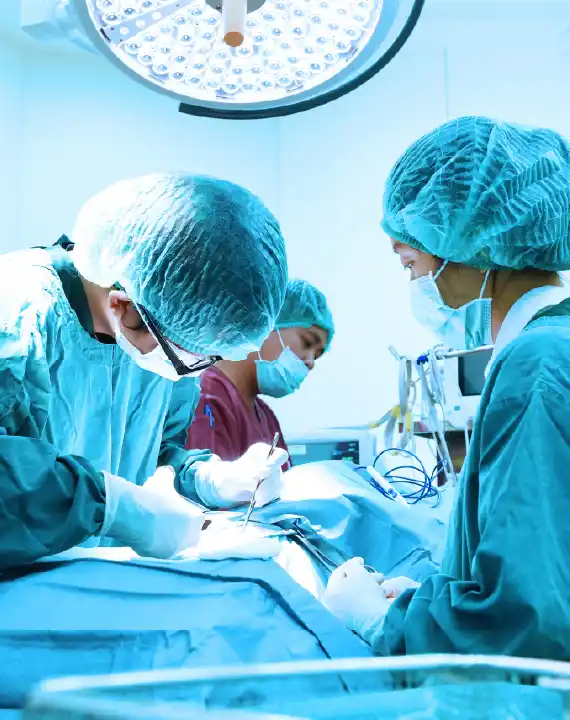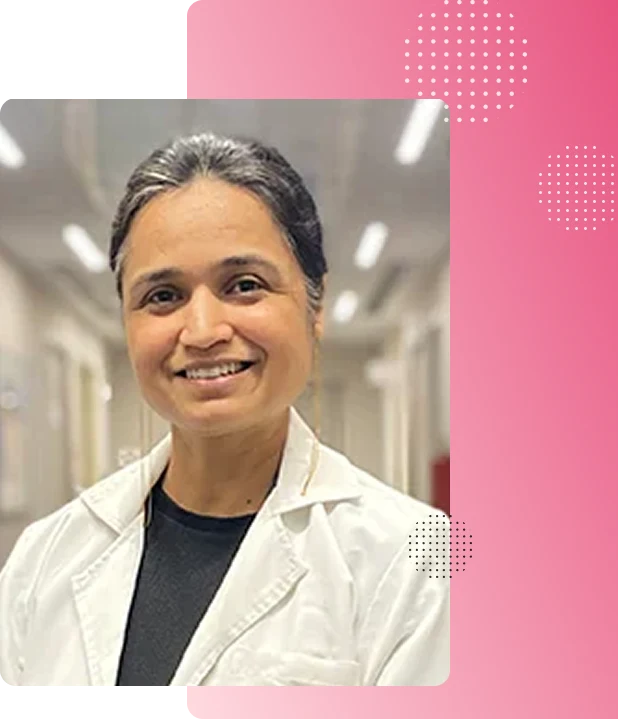Preparation
Pre-surgical evaluation (blood tests, imaging, ECG). Fasting for several hours before surgery.
Expert care by Dr. Aruna Kalra, leading gynaecologist in Gurgaon
Many women live with uterine prolapse without saying anything about it, thinking it's just normal after childbirth or part of ageing. In fact, it's a medical condition that may be treated. It happens when the pelvic muscles and ligaments get weak and the uterus slips down into or even outside the vaginal canal.
Uterine fibroids are among the most common benign tumours affecting women of reproductive age, yet their impact often goes unnoticed until they interfere with life’s most intimate goals like motherhood.
The most common signs to look out for are:
Uterine prolapse doesn't always happen all at once; it happens slowly as the pelvic muscles get weaker. You might not notice the early indicators, but you should never dismiss them. In later stages, the uterus may stick out of the vaginal opening. Women often say it feels like something falling down within, which may be both physically and emotionally painful.
Dr. Aruna Kalra is one of the most sought-after physicians who offer innovative and caring treatment for uterine prolapse that combines medical accuracy with emotional support. She makes a personalised treatment plan that balances keeping the uterus healthy with getting pregnant using minimally invasive gynaecologic surgery.
Diagnosis begins with a detailed pelvic examination. Dr. Aruna Kalra, one of the best gynecologists for uterine prolapse in Gurgaon, carefully assesses the degree of prolapse, ranging from mild (first-degree) to complete (fourth-degree).
This precise diagnosis ensures that every woman gets the most appropriate management - whether conservative, surgical, or combined.

Every woman’s body and stage of prolapse are unique. With Dr Kalra’s approach in Gurgaon, treatment focuses on personalised recovery, balancing comfort, fertility goals, and long-term wellness.
For mild or moderate prolapse, conservative approaches can be quite helpful:
When prolapse is moderate to severe, surgery provides lasting relief and structural correction. Some common procedures are:
Patients are fully educated, comfortable, and involved in the decision-making process for each surgery.

Uterine prolapse can result from several causes that weaken pelvic support structures. The most common include:
Knowing what causes these problems can help you avoid them and get care early on for long-term pelvic health.
Ignoring symptoms of uterine prolapse can have long-term consequences. Without treatment, the condition can worsen over time and lead to:
Timely intervention not only restores physical health but also safeguards emotional confidence, allowing women to reclaim control over their lives. Uterine prolapse is not just a physical condition, it impacts confidence, mobility, and intimate relationships. But with timely diagnosis and expert care, recovery is entirely possible.
Under the compassionate guidance of Dr. Aruna Kalra, women in Gurgaon have access to world-class uterine prolapse treatment, combining medical expertise with genuine empathy. Whether you need non-surgical support or advanced laparoscopic prolapse surgery in Gurgaon, her team ensures you heal with dignity and regain control over your body.
If you’re experiencing symptoms of prolapse, don’t wait for it to worsen. Book a consultation today and take the first step toward regaining your comfort, confidence, and quality of life.
Uterine Prolapse includes conservative management with pelvic floor exercises and vaginal pessaries, progressing to surgical options such as uterine suspension or hysterectomy based on severity, symptoms, and patient preferences.
fibroids, endometriosis, uterine prolapse, cancer, or heavy bleeding.
total, partial, or radical hysterectomy.
Robotic-Assisted, Laparotomy, or Laparoscopic Ovarian Cystectomy.
age, medical history, and overall health.
Pre-surgical evaluation (blood tests, imaging, ECG). Fasting for several hours before surgery.
May be done in the lower abdomen, through the vagina, or with small camera-guided incisions.
Incisions or vaginal openings are sutured. Sterile dressing is applied.
Hospital stay usually ranges from 1–3 days (may be shorter with minimally invasive surgery).
Thick Endometrial Lining Is Cancer?
Pregnancy With Big Endometriosis Cysts
How Often Should You See the Gynaecologist?
Here are some frequently asked questions
